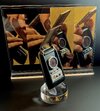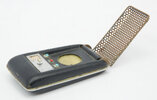Preservation is defined as the act or process of applying measures necessary to sustain the existing form, integrity, and materials of an historic property. Work, including preliminary measures to protect and stabilize the property, generally focuses upon the ongoing maintenance and repair of historic materials and features rather than extensive replacement and new construction. The limited and sensitive upgrading of mechanical, electrical, and plumbing systems and other code-required work to make properties functional is appropriate within a preservation project. However, new exterior additions are not within the scope of this treatment. The Standards for Preservation require retention of the greatest amount of historic fabric along with the building’s historic form.
Rehabilitation is defined as the act or process of making possible a compatible use for a property through repair, alterations, and additions while preserving those portions or features which convey its historical, cultural, or architectural values. The Rehabilitation Standards acknowledge the need to alter or add to a historic building to meet continuing or new uses while retaining the building’s historic character.
Restoration is defined as the act or process of accurately depicting the form, features, and character of a property as it appeared at a particular period of time by means of the removal of features from other periods in its history and reconstruction of missing features from the restoration period. The limited and sensitive upgrading of mechanical, electrical, and plumbing systems and other code-required work to make properties functional is appropriate within a restoration project. The Restoration Standards allow for the depiction of a building at a particular time in its history by preserving materials, features, finishes, and spaces from its period of significance and removing those from other periods.
Reconstruction is defined as the act or process of depicting, by means of new construction, the form, features, and detailing of a non-surviving site, landscape, building, structure, or object for the purpose of replicating its appearance at a specific period of time and in its historic location. The Reconstruction Standards establish a limited framework for recreating a vanished or non-surviving building with new materials, primarily for interpretive purposes.



